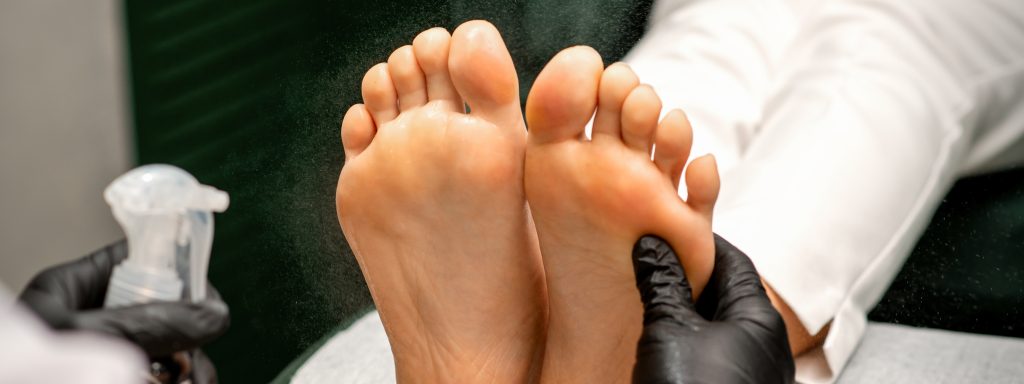Is Ridesharing Safe for Female Passengers?
In recent years, ridesharing services like Uber and Lyft have become increasingly popular as convenient transportation alternatives. These services have seen significant growth and expansion across the country, with women-focused ride-sharing options emerging in various regions. This national expansion highlights the importance of consistent safety standards and legal considerations for female passengers.
However, concerns about the safety of female passengers have become a serious focus, with many women reporting incidents of harassment and assault while using these services. Women are often the primary victims of ride-hailing assaults, with evidence pointing to significant numbers of women experiencing uncomfortable encounters. There has been a high number of reported incidents and complaints related to ridesharing services, emphasizing the scale and urgency of addressing safety breaches nationwide. Statistical data indicate that incidents of sexual assault in ridesharing services often involve female victims. In 2019, there were 4,600 reports of sexual assaults, underscoring the need for robust safety measures. As a female passenger, understanding the measures rideshare companies have implemented to ensure your safety is crucial, as is knowing how to protect yourself while using these services. Passengers should sit in the back seat for better visibility. Always wear a seatbelt when using ridesharing services to further enhance your safety.
Understanding Ridesharing Safety
Ridesharing services have transformed urban transportation, offering millions of users a convenient and flexible way to get around. With just a few taps on a smartphone, passengers can request a ride at any hour, making these services especially popular for those with busy schedules or limited access to traditional transportation. However, as ridesharing has become more widespread, concerns about passenger safety have also grown—particularly among female passengers.
Many women have reported a higher incidence of harassment and assault while using rideshare services, raising important questions about the effectiveness of current safety measures. In Mexico, a majority of women have reported experiencing an assault during their trips using ridesharing services. Rideshare companies have responded by introducing background checks for drivers, in-app emergency buttons, GPS tracking, and other safety features designed to protect users. Despite these efforts, passenger safety remains a top concern, especially for female passengers traveling alone or at night. For instance, Uber recorded 3,045 incidents of sexual assault involving its drivers in 2018, highlighting the ongoing challenges in ensuring passenger safety. Similarly, Didi Chuxing reported over 50 cases of drivers sexually assaulting or harassing passengers in China during 2018. Reports show that 31% of sexual assault cases involve riders, while 68% involve rideshare drivers, further emphasizing the need for comprehensive safety protocols.
As ridesharing services continue to evolve, it’s essential to understand both the progress that has been made and the challenges that remain. This article will explore the importance of safety for female passengers, review the measures rideshare companies have implemented, and offer practical tips to help enhance your safety every time you ride.
What Safety Measures Have Been Implemented by Uber and Lyft to Keep Their Passengers Safe?
Both Uber and Lyft have recognized the need to prioritize passenger safety and are focused on improving the quality and safety of their service for all users, especially female passengers. They have given particular attention to female passengers, including:
- Background Checks for Drivers: Rideshare services conduct comprehensive background checks on all drivers before they can accept ride requests. These checks include criminal background checks and driving history reviews to reduce the risk of incidents, as well as evaluating the driver’s behavior and compliance with safety standards. Passengers often prefer ridesharing services that enhance safety protocols like background checks and driver verification, as these measures contribute to a greater sense of security.
- In-App Safety Features: Uber and Lyft have introduced various in-app safety features to enhance passenger security:
- Emergency Assistance Button: This feature allows passengers to quickly contact 911 from within the app if they feel unsafe during a ride.
- GPS Tracking: Both companies track all rides in real time, providing data that can be used if any issues arise during the trip.
- Share Your Trip: Passengers can share their trip details, such as the driver’s name, photo, and vehicle information, with a trusted contact in real time. Passengers can also access additional information about their ride, including the driver’s qualifications and trip details, to further enhance safety.
- Two-Way Rating Systems: These systems allow both passengers and drivers to rate each other, helping to identify problematic behavior.
- Bluetooth and Phone Charging Stations: Many rideshare vehicles are equipped with Bluetooth and phone charging stations, ensuring that passengers’ mobile phones remain operational, which provides reassurance to female passengers.
Specialized Safety Programs: Both Uber and Lyft have developed policies and safety measures to address concerns about passenger safety, including zero-tolerance policies for harassment and assault. Some companies are also working with organizations to develop safety practices that prioritize the needs of female passengers. Lyft has introduced Women+ Connect, which allows female passengers and nonbinary riders to request rides with female drivers, making a significant difference in safety and comfort, particularly during late-night rides. This feature increases the likelihood that female and nonbinary riders are matched with female drivers, enhancing both safety and comfort. Women+ Connect has powered more than 10 million rides since its launch. Many rideshare services offer optional features for female and nonbinary riders to be matched with drivers of the same identity. By offering these specialized services and matching features, Lyft and Uber aim to improve trust and reliability for vulnerable groups. Additionally, Just Her Rideshare exclusively employs female drivers and serves women and children under 13, further addressing safety concerns for these demographics. Just Her Rideshare also performs rigorous background checks on its drivers to ensure passenger safety. SafeHer is another ridesharing service that requires all its drivers to be female and serves only female passengers and children under 13, providing an additional layer of security.
What Are Some Safety Tips for Female Passengers When Taking Rideshare?
While Uber and Lyft have implemented several safety measures, incidents can still occur. Because of this, it’s essential for female passengers to take additional steps to protect themselves. By being proactive and aware, you can enhance your safety and have a more secure ridesharing experience. Safety tips may also vary depending on the type of trips you are taking, such as night trips, trips in remote areas, or work-related journeys. Make sure you:
- Verify Your Ride: Before getting into an Uber or Lyft vehicle, verify the driver’s identity and vehicle details through the app. Women are encouraged to check the license plate and confirm the driver’s name before entering a rideshare vehicle. Confirming the driver’s identity is a key safety step—check the license plate, make and model of the car, and the driver’s photo to ensure they match the information provided in the app.
- Sit in the Back Seat: For added safety and personal space, always sit in the back seat of the vehicle. This also allows for a quicker exit if needed and helps maintain appropriate boundaries. Women should sit in the back seat of rideshare vehicles to maintain personal space and have an exit option.
- Share Your Trip: Utilize the “Share Your Trip” feature to let a friend or family member track your ride in real time. This adds an extra layer of security, as someone you trust will be aware of your whereabouts.
- Stay Alert and Keep Belongings Close: Remain cautious when using rideshare services, especially at night. Keep your personal belongings close and your phone charged and accessible during the ride. Avoid engaging in distracting activities while in the vehicle to stay aware of your surroundings.
- Trust Your Instincts: If something feels off, trust your instincts. Being aware of your surroundings and keeping an eye on the route can help identify any potential risks. If you feel uncomfortable at any point during the ride, do not hesitate to end the ride early. Additionally, it is advisable to wait for a ride indoors rather than outside to minimize exposure to potential risks.
- Check Child Safety Locks: Quickly check that the child safety lock is not engaged on the door after getting in the vehicle to ensure you can exit if needed.
- Carry a Personal Safety Device: Carrying a personal safety device, such as pepper spray, can provide an additional layer of security during rides.
Some female passengers mention feeling safer when sharing rides with other women or coordinating trips with friends. Women often prefer to ride with other women or female drivers for a heightened sense of security during rides.
By following these safety tips, female passengers can significantly reduce their risks and feel more confident while using rideshare services. Many female passengers mention that feedback from others about their experiences and safety strategies is particularly helpful for enhancing safety. Always stay vigilant and prioritize your safety above all else.
Is Uber or Lyft Safer for Solo Passengers?
Female riders and passengers traveling alone often wonder whether riding solo impacts their safety. The truth is that while rideshare companies like Uber and Lyft offer safety tools, solo travel presents unique challenges that warrant extra attention. Some experts argue about the effectiveness of current safety measures for solo female passengers, with ongoing debates about whether these solutions adequately address the risks. Many women prefer female drivers due to increased comfort and reduced anxiety during rides, which highlights the importance of offering options that cater to these preferences.
Despite the safety measures mentioned above, incidents of harassment and assault continue to occur, highlighting the need for ongoing vigilance. Female passengers are disproportionately affected by these incidents, and incidents involving rideshare drivers still occur despite the company’s efforts to improve safety. Searching for safety data or incident reports—such as by conducting a search on official platforms—can help female passengers make informed decisions about solo travel.
Solo passengers are advised to take additional precautions:
- Confirm the driver’s identity and vehicle details before entering the car
- Always sit in the back seat and keep your phone accessible
- Maintain visibility by sharing your ride details with someone you trust
- Trust your instincts and don’t hesitate to end the ride if you feel unsafe
Whenever possible, choose a route that is busy and well-lit, and consider scheduling rides during daylight hours. Women exhibit a tendency to avoid areas with high crime rates as part of their preventive measures while using rideshare services. Environmental settings, such as poorly lit areas, trigger feelings of insecurity among female passengers during ride-hailing. Even with these precautions, the unpredictability of solo travel demands vigilance.
While rideshare companies have made significant strides in improving passenger safety, there are still notable challenges and limitations that female passengers should be aware of. Background checks, for example, are a critical first step, but they may not always catch every potential risk—especially if a driver has no prior criminal record or if records are incomplete in certain regions. Passengers can use the driver’s rating and reviews to determine if they feel comfortable riding with them. Additionally, in-app safety features like emergency buttons and GPS tracking are valuable tools, but they often serve as reactive measures rather than preventing incidents from occurring in the first place. The perceived safety of ridesharing is also influenced by passengers’ previous victimization experiences and socio-demographic factors, which can shape their trust in these services.
Challenges and Limitations of Ridesharing Safety
While rideshare companies have made significant strides in improving passenger safety, there are still notable challenges and limitations that female passengers should be aware of. Background checks, for example, are a critical first step, but they may not always catch every potential risk—especially if a driver has no prior criminal record or if records are incomplete in certain regions. Additionally, in-app safety features like emergency buttons and GPS tracking are valuable tools, but they often serve as reactive measures rather than preventing incidents from occurring in the first place.
Another challenge is the underreporting of harassment and assault. Many women may feel uncomfortable or unsure about reporting incidents, which can make it difficult for rideshare companies to identify problematic drivers and improve their services. Inconsistent enforcement of safety policies and varying standards across different countries and cities can also create gaps in protection for female passengers.
Furthermore, the sheer scale of ridesharing services means that maintaining high safety standards for every ride and every driver is an ongoing struggle. As new safety features are developed, it’s essential for rideshare companies to continually review their effectiveness and adapt to emerging risks. SafeHer plans to implement stringent background checks and standards for driver accountability, which could serve as a model for other companies aiming to enhance passenger safety. For female passengers, understanding these limitations is key to remaining cautious and taking proactive steps to protect personal safety during every trip. The majority of criminal judgments involving ridesharing cases reported offenses related to sexual assault and indecent behavior, highlighting the critical need for stringent safety measures.
The Importance of Safety for Female Passengers
Safety is a fundamental concern for all rideshare users, but it holds particular significance for female passengers. Studies and reports from organizations like UN Women have highlighted the unique risks women face in public and private transportation, including a higher likelihood of experiencing harassment or sexual assault. Women exhibit a higher reliance on public transport than men, and they also perceive lower safety levels in these environments. These concerns can have a profound impact on women’s mobility, independence, and overall trust in rideshare services.
For many women, the fear of encountering unsafe situations can limit their willingness to use ridesharing services, especially at night or when traveling alone. This not only affects their ability to move freely but can also influence their participation in work, social, and family activities. Many women feel more secure traveling with female drivers due to a sense of shared experience and understanding, which can alleviate anxiety and foster a greater sense of trust. Creating a safer environment for female passengers is essential for promoting gender equality and ensuring that everyone can benefit from the convenience of ridesharing.
Feedback from female riders plays a crucial role in helping rideshare companies identify areas for improvement and develop more effective safety practices. By voicing their experiences and concerns, female passengers contribute to the ongoing effort to make ridesharing safer for everyone. It’s important for rideshare companies, drivers, and passengers to work together to prioritize safety and foster a culture of respect and accountability.
What to Do If You Feel Unsafe in an Uber or Lyft Ride?
Feeling unsafe during a rideshare trip can be a frightening experience, but being prepared to take action can make a significant difference. Here are the steps you should follow to ensure your safety:
- Use the Emergency Assistance Button: Contact 911 through the app to alert authorities.
- Exit the Vehicle: If possible, safely exit the vehicle and move to a secure location.
- Report the Incident: Contact Uber or Lyft’s support team to report any concerns or unsafe behavior. Provide as many details as possible to assist in the investigation.
Taking these steps can help to ensure your immediate safety as well as to contribute to preventing future incidents. Always prioritize your well-being and trust your instincts in these situations.
Know Your Rights and Learn How Legal Assistance Can Help If You’ve Experienced Issues in a Rideshare Vehicle
Rideshare services like Uber and Lyft have made transportation far more convenient, but passenger safety remains a central concern, especially for female riders. Knowing your rights and how to seek assistance is crucial if you ever find yourself in a precarious situation. As a rideshare passenger, you have several rights designed to protect your safety and privacy, including:
- Right to a Safe Ride: You are entitled to a safe and secure ride. If you experience any unsafe behavior from the driver, you can and should report it to Uber or Lyft immediately. If the situation escalates, contacting law enforcement is always an option.
- Right to Privacy: Your personal information, including your trip details, is safeguarded by Uber and Lyft’s privacy policies. Drivers should never ask for personal information beyond what is necessary for the ride. If a driver breaches this protocol, report it immediately to the rideshare company.
- Right to End the Ride: If at any point you feel unsafe or uncomfortable, you have the right to end the ride. Use the app to notify Uber or Lyft, and if necessary, stop the ride at a safe location. Your immediate safety is paramount.
Female passenger feedback is essential in helping rideshare companies develop and improve their safety measures. By sharing their experiences and concerns, female passengers can help identify areas for improvement and inform the development of more effective safety practices.
If you experience serious incidents in a rideshare vehicle, legal assistance may be necessary. An attorney can help investigate the circumstances surrounding your case and determine if the rideshare company or driver can be held accountable for negligence, such as inadequate background checks or failure to respond to previous complaints. Your sexual assault victims’ attorney will work to secure compensation for the physical, emotional, and financial damages you have suffered. This can include medical expenses, therapy costs, lost wages, and pain and suffering.
Additional Resources and Information
If you’re looking for more information or support regarding ridesharing safety, there are several resources available to help female passengers stay informed and protected. Organizations such as UN Women offer guidance on personal safety and advocate for safer transportation options worldwide. Many rideshare companies also provide dedicated safety pages on their websites, where you can find updates on new safety features, tips for secure travel, and instructions for reporting incidents.
For immediate assistance or to report an incident, you can contact local law enforcement or use the emergency features within the rideshare app. Additionally, national hotlines and support organizations are available to provide confidential advice and support to those who have experienced harassment or assault.
Staying informed about the latest safety measures and sharing your experiences with friends, family, and the rideshare community can help create a safer environment for all passengers. By remaining vigilant and proactive, female passengers can continue to enjoy the benefits of ridesharing while minimizing risks and promoting positive change within the industry.
Final Thoughts on Ridesharing Safety for Female Passengers
While Uber and Lyft have implemented numerous safety measures to protect female passengers, it’s essential to stay informed and take proactive steps to ensure your own safety. By understanding the available safety features and knowing your rights, you can enhance your security while using rideshare services.
Ridesharing safety is a complex issue that requires ongoing attention and improvement from rideshare companies, passengers, and regulators. By prioritizing the safety and well-being of female passengers, rideshare companies can provide a safer and more comfortable experience for all users. Ultimately, a safer environment for female passengers requires a collaborative effort from all stakeholders and a commitment to ongoing improvement and innovation in safety practices and measures.
Contact RTRLAW If You’ve Been a Sexual Assault Victim In a Rideshare Vehicle Today!
While Uber and Lyft have implemented numerous safety measures to protect female passengers, it’s essential to stay informed and take proactive steps to ensure your own safety. By understanding the available safety features and knowing your rights, you can enhance your security while using rideshare services.
At RTRLAW, our FL and TX lawyers are committed to advocating for your safety and rights. If you have any concerns or need legal assistance related to rideshare services, especially if you have been sexually assaulted, contact us today for a free consultation. We are here to help you navigate any challenges and ensure your peace of mind.


 CALL US NOW
CALL US NOW TEXT US NOW
TEXT US NOW



























